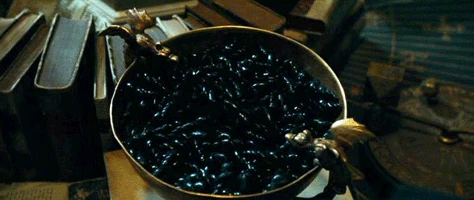Research shows black licorice packs a
potent punch
BY PAUL MAYNE, Western University
Dr. Stan Van Uum, a professor in the
divisions of Clinical Pharmacology and Endocrinology and Metabolism, warns that
binge eating the popular confectionary can send your blood pressure soaring, as
well as cause dramatically lower levels of potassium in the body, resulting in
abnormal heart rhythms and even paralysis.
The problems are compounded, he
continued, because most Canadian physicians don’t know to ask about it.
Hypertension (high blood pressure)
is one of the most common problems encountered in the primary-care setting.
Numerous secondary causes of hypertension exist and most are potentially
reversible.
The ability to screen and manage such causes may spare patients from prolonged medical therapy and complications.
Van Uum cited the case of a
sweet-toothed 51-year-old patient who recently presented himself in the
emergency room with complaints of abdominal pain for three days, plus a day of
decreased appetite, vomiting and diarrhea. His elevated blood pressure and
hypokalemia (low potassium) led doctors to run a series of tests.
Upon further questioning, doctors
discovered the patient had recently started eating large amounts of black
licorice jelly beans – about 50 a day – which he continued to eat while in
hospital.
That was all the information doctors
needed.
The diagnosis? Licorice-induced
hypertension.
“Most people wouldn’t think about
it. Patients wouldn’t think of mentioning it. They don’t see it as an issue,”
Van Uum said of the case study he recently co-authored in the journal Postgraduate Medicine.
“If the physician doesn’t
ask about it, you may not find out. We thought it was a good reason to try to
bring the issue back to people’s memory that, in certain cases, there could be
underlying causes, and by asking the right questions you can make major changes.”
Glycyrrhetinic acid – the active
ingredient in licorice – is the root cause of the problem, through its effects
on the body’s cortisol metabolism, taking away a protective mechanism, Van Uum
explained.
Licorice causes your body to retain water and salt, therefore
lowering potassium levels. An enzyme in the body acts as a gatekeeper, with the
cortisol on one side and a receptor on the other, not allowing the cortisol to
get through because it’s continuously inactivated. But licorice stops that inactivation,
allowing the cortisol to pass through.
So, how often would doctors see a
case such as this? It depends on what country you’re in.
“In the Netherlands, it’s the second
or third question the doctor would ask if a patient is showing signs of high
blood pressure. It’s very common and familiar to them,” Van Uum said of the
popular Dutch candy. “Same goes for some other Scandinavian countries, as well.
“In Canada, people are not well
aware of it. Therefore, it requires a sort of refresher because there can be
reasons you don’t really think of.”
Much of the black licorice sold in
the United States, however, isn’t dangerous at all as it does not contain
actual licorice. Instead, manufacturers add anise to the candy to give it a
licorice-like flavor.
In a similar case, another patient
saw his blood pressure soar in January and February, then drop back to normal
by March. It happened again the following year. His doctors’ inquiry discovered
the patient was receiving an annual Christmas package filled with, you guessed
it, black licorice treats.
“It’s again something that, if you
are not aware of, you don’t find out,” said Van Uum, who knows of a patient in
the Netherlands whose licorice consumption led to temporary paralysis.
That said, Van Uum stressed you
don’t need to cut out the tasty treats together.
“Whatever you do, take it with
measure and don’t binge on it. It’s about moderation.”
The effects on the body depend on
the amount of licorice eaten and the patient’s sensitivity to the ingredient.
There are also products – such as chewing tobacco, smoking cessation aids, teas
and even cheeses – that contain licorice, so it is important for physicians to
ask for, and patients to share, detailed dietary histories in the workup of
hypertension.
Patients may not be aware or
properly informed of the potential side effects of licorice and are unlikely to
list it among their medication, Van Uum noted.
“If you find someone who has a
certain increase in blood pressure, and a relatively young person, because
blood pressure goes up with age, if its severity is more than you expect, you
need blood tests to further check,” he said.
“With high blood pressure, there
are always underlying causes. But if you can find them, you can either adjust
the treatment or take it away, and the patient may not even need medication at
all.”
Had the licorice diagnosis not been
made with the 51-year-old patient, he would have likely gone on a number of
medications to treat his symptoms, which themselves could have had potential
side effects. And the jelly bean binging likely would have continued.
“Physicians need to take a moment
and think about the causes, rather than just treating the consequences in
general,” Van Uum said. “If you deal with the causes, it’s always better.
Reflect for a moment if something has changed. Most family doctors will not see
this, therefore, if you don’t ask, you don’t find out.”
